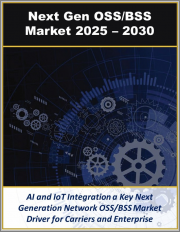
|
시장보고서
상품코드
1492709
AI를 활용하여 근본적이나 배포 가능한 무선 플랫폼 구현Using AI to Enable a Radical but Deployable Radio Platform |
||||||
AI 네이티브로 근본적으로 재설계된 에어 인터페이스는 5G의 상업적 결점에 대처할 것으로 기대되고 있습니다.
5G 어드밴스트와 6G 무선 플랫폼의 현재와 향후 발전, 특히 AI 네이티브 에어 인터페이스의 가능성에 대해 분석하고 있습니다. 또한 새로운 클라우드 네이티브 RAN 환경에 최적화되지 않고, 근본적인 새로운 사용 사례 및 경제성을 지원하고 있지 않은 5G 무선을 사용할 때 MNO가 현재 직면하고 있는 과제를 검증하고 있습니다.
목차
- 통신사업자의 매출 성장을 지원하는 현재 5G 무선의 주요 결점과 대처법
- 새로운 파형을 향한 업계의 진척과 새로운 사용자 체험과 수익화
- vRAN과 첨단 무선의 트레이드 오프를 줄이기 위한 클라우드와 RAN 에코시스템의 효과적 협업
- AI 네이티브 에어 인터페이스에 의한 향후 RAN의 성능과 상업적 성공과 주요 과제
"An AI-native, radically redesigned air interface would address the commercial shortcomings of 5G."
This report analyses the current and future development of the 5G Advanced and putative 6G radio platform, especially in relation to the potential AI-native air interface.
It examines the challenges that MNOs currently face when using 5G radio that is not optimised for the emerging cloud-native RAN environment and does not support radical new use cases and economics.
The report also assesses how new collaborations between various stakeholders could help to address these challenges and produce an AI-native radio platform that would support new business models without imposing a capex-heavy 'big bang' upgrade on MNOs.
Key questions answered in this report:
- What are the primary shortcomings of the current 5G radio in supporting operator revenue growth and how can they be addressed?
- What is the industry progress towards new waveforms and how could these enable new user experiences and revenue?
- How can the cloud and RAN ecosystems collaborate more effectively to reduce the trade-offs between vRAN and advanced radios?
- What impact could an AI-native air interface have on the performance and commercial success of a future RAN, and what are the main challenges?
Author Profile:
Caroline Gabriel, Research Director, expert in network and cloud strategies and architecture.
Caroline leads Analysys Mason's Networks and Cloud research practices, as well as leading many 5G-related research activities across multiple programmes including Next-Generation Wireless Networks and Transport Network Strategies. She is responsible for building and running Analysys Mason's unique research base of mobile and converged operators worldwide.
She works directly with Analysys Mason's research clients to advise them on wireless network trends and market developments. She has been engaged in technology analysis, research and consulting for 30 years, and has focused entirely on mobile and wireless since 2002. Her focus is on critical issues and trends related to mobile and wireless infrastructure, particularly operator deployment intentions for 4G, 5G, virtualised RAN, end-to-end open networks and other technologies. She has led research and consulting projects with a wide range of clients, including mobile infrastructure vendors, large and start-up operators, regulators, trade bodies, government agencies and financial institutions.
Caroline co-founded Rethink Technology Research in 2002. Prior to that, she held various executive positions at VNU Business Publishing (then Europe's largest producer of technology-related B2B reports and publications). She holds an MA from the University of Oxford.















